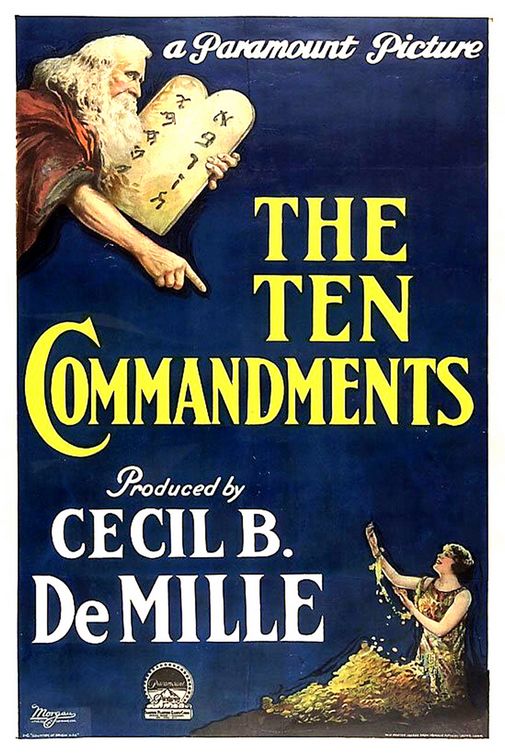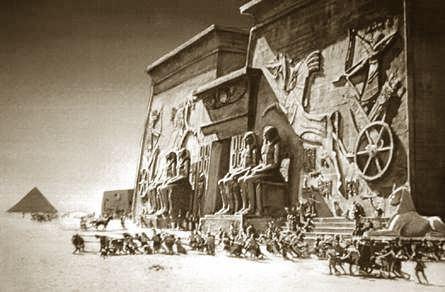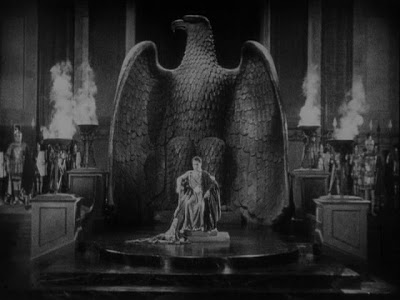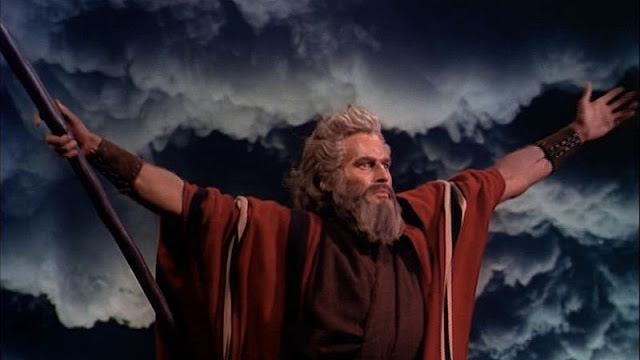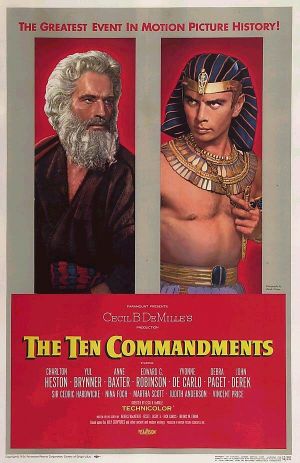Cecil B. DeMille’s name is still widely known more than 60 years after his death, and his reputation for historical and biblical dramas on an epic scale still holds.
He was also one of the most versatile filmmakers of the early years of cinema. He mastered both intimate psychological drama and grand-scale historical epics and transformed the medium at a time when it was still in its early years.
Today, he is probably best known for his 1956 film THE TEN COMMANDMENTS, and for his other biblical epics such as THE KING OF KINGS and SAMSON AND DELILAH.
However, it is ironic that the director who is most well-remembered for having made biblical epics today, actually only directed four over the course of his entire career: THE TEN COMMANDMENTS (both the 1923 original and its 1956 remake), THE KING OF KINGS (1927), and SAMSON AND DELILAH (1949). The fact that his name is so completely associated with this subgenre speaks volumes about his influence on it.
DeMille had been trained in the theater under the legendary producer David Belasco, known for his attention to detail and realism, as well as innovative stage lighting. DeMille brought something of Belascos’s sensibility to his role as a film director, and almost from the time he emerged in his film career in 1914, displayed a keen eye for spectacle. This, combined with his skill at historical epics like JOAN THE WOMAN (1916), made him perfectly suited for adapting such heavy subject matter as biblical stories to the screen.
THE TEN COMMANDMENTS (1923) was his first such film, although in this case, only the first half of the film is directly adapted from a biblical story – in this case the exodus from Egypt. The second half of the film is set in modern times, and featured the big stars of the era (Richard Dix, Rod La Rocque, Nita Naldi and Agnes Ayres all appear). But it was the first half – with its staggering set design, state-of-the-art special effects, and cast of thousands that made the biggest impression on audiences.
In the first half of the film, billed as the “prologue”, frequent DeMille actor Theodore Roberts played Moses, with Charles De Rochefort as Rameses. The prologue culminates with the celebrated “parting of the Red Sea” sequence, which was achieved with breathtaking audacity by special effects man Roy Pomeroy. Pomeroy had gotten the idea on how to achieve the effect of the parting water when he observed a child dipping a spoon into a cup of pudding, causing the pudding to part and spread on each side. To top it off, DeMille shot this sequence in two-color Technicolor, which heightened its impact.
Seen today, it is the prologue of THE TEN COMMANDMENTS that remains the most interesting part. The “modern” section now feels somewhat dated, with its moralizing and heavy-handed execution. The prologue, on the other hand, retains its ability to stun and fascinate, particularly in regards to its special effects.
DeMille’s next biblical epic was quite different in tone. THE KING OF KINGS, which was produced by DeMille’s own company and released by Pathe in 1927, was a highly reverent depiction of the life of Jesus, and was a highly celebrated and much anticipated release.
At one time, the film held the record as the film that had been seen by more people across the globe than any other, since it was frequently revived at church screenings (the fact that it was a silent film made it easier for groups to screen it who didn’t have access to sound prints or projection, and could be shown throughout the world without consideration to the language barrier).
H. B. Warner starred as Jesus, and the film featured a large cast of well-known players, including Joseph Schildkraut, Ernest Torrence, Dorothy Cumming, Robert Edeson, Charles Belcher, Sam DeGrasse, Montagu Love and William Boyd, among many others (scores of Hollywood character players appear in the film).
The film was surprisingly restrained for a DeMille production, with relatively few sequences that stood out for the sake of spectacle. This is not to say it was a small-scale production, however; it was in fact one of the largest undertakings DeMille had directed up to that time, and home movie footage taken on the set indicates the scale of the sets and crowds that DeMille employed in the making of this important film. For its original roadshow release, the film ran a whopping 155 minutes, and featured sequences shot in Technicolor. It was later cut down for its general release, and featured a synchronized score, which was beneficial to smaller theaters unable to hire a full orchestra for musical accompaniment.
If THE KING OF KINGS was DeMille at his most restrained, then SAMSON AND DELILAH, his next biblical epic – released 22 years later in 1949 – represented DeMille at his most garish.
Starring Victor Mature and Hedy Lamarr, the film was shot in vibrant Technicolor, and was just the sort of spectacle that Hollywood was being drawn to at the time in an effort to win back audiences who were being lost to television.
By offering viewers an experience they could not get at home in front of their 12” black and white television sets, Hollywood reached back to its past as a source of inspiration for larger-than-life screen spectacles, and no one knew how to pull that off better than the man who’d practically invented the genre.
SAMSON AND DELILAH was not one of DeMille’s better films, however, despite a stellar cast and some memorable set-pieces. His next, and final biblical epic, would be perhaps his finest.
THE TEN COMMANDMENTS was released in 1956 and quickly became one of the highest grossing films of all time, a record it still holds among such other box-office champs as STAR WARS, E.T., TITANIC, THE SOUND OF MUSIC and GONE WITH THE WIND.
The film was an updating and an expansion of the prologue that had opened DeMille’s 1923 film of the same name, this time starring Charlton Heston as Moses and Yul Brynner as Rameses heading an all-star cast that included such notables as Edward G. Robinson, Cedric Hardwicke, Vincent Price and many others.
It was one of the biggest films made in Hollywood up to that time, boasting more than 20,000 extras used in the exodus sequence. Shooting took place partially on location in Egypt, where the 73-year-old DeMille suffered a heart attack during production. He recovered, however, and saw his film to completion. It is remarkable that even this late in his career, DeMille was still pioneering the use of new special effects technologies, such as bluescreen, which allowed for a more accurate and realistic-looking matting process than previous techniques such as rear projection.
THE TEN COMMANDMENTS would be DeMille’s final film before his death in 1959, but it would also be perhaps his most successful. It was a fitting finish to his long career, and reminded audiences well into the age of television why he was still the movies’ greatest showman.





































































































